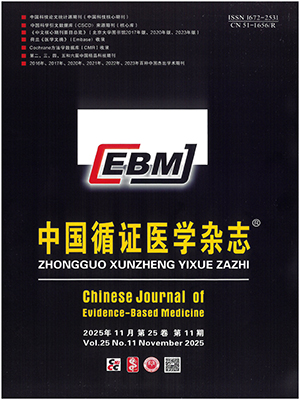| 1. |
Engel C, Brunkhorst FM, Bone HG, et al. Epidemiology of sepsis in Germany:results from a national prospective multicenter study. Intensive Care Med, 2007, 33(4):606-618.
|
| 2. |
Wacker C, Prkno A, Brunkhorst FM, et al. Procalcitonin as a diagnostic marker for sepsis:a systematic review and meta- analysis. Lancet Infect Dis, 2013, 13(5):426-435.
|
| 3. |
Matthaiou DK, Ntani G, Kontogiorgi M, et al. An ESICM systematic review and meta-analysis of procalcitonin-guided antibiotic therapy algorithms in adult critically ill patients. Intensive Care Med, 2012, 38(6):940-949.
|
| 4. |
Higgins JP, Green S. Cochrane Handbook for Systematic Reviews of Interventions(Version 5.1.0). Available at:http://www.cochranehandbook.org.
|
| 5. |
曹曉宇, 豆周林, 李興. 血清降鈣素原對ICU膿毒癥患者的抗感染治療的指導意義分析. 醫學信息, 2016, 29(9):80-81.
|
| 6. |
Hochreiter M, K?hler T, Schweiger AM, et al. Procalcitonin to guide duration of antibiotic therapy in intensive care patients:a randomized prospective controlled trial. Crit Care, 2009, 13(3):R83.
|
| 7. |
Baohua, LI Haifeng, LEI Yu, et al. Clinical significance of dynamic monitoring of procalcitonin in guiding the use of antibiotics in patients with sepsis in ICU. Chin Crit Care Med, 2013, 25(11):690-693.
|
| 8. |
劉玉雙, 侯生榮, 朱梅, 等. ICU中膿毒癥患者監測血降鈣素原水平指導抗生素應用的臨床意義. 中國現代藥物應用, 2015, 9(18):79-80.
|
| 9. |
Maseda E, Suarez-de-la-Rica A, Anillo V, et al. Procalcitonin-guided therapy may reduce length of antibiotic treatment in intensive care unit patients with secondary peritonitis:A multicenter retrospective study. J Crit Care, 2014, 30(3):537-542.
|
| 10. |
Schroeder S, Hochreiter M, Koehler T, et al. Procalcitonin (PCT)- guided algorithm reduces Length of antibiotic treatment in surgical intensive care patients with severe sepsis:results of prospective randomized study. Langenbecks Arch Surg, 2009, 394(2):221-226.
|
| 11. |
張亦文. 降鈣素原在ICU膿毒癥患者中的應用價值. 按摩與康復醫學, 2014, 5(10):102-103.
|
| 12. |
Svoboda P, Kantoroua I, Scheer P, et al. Can Procalcitonin help us in timing of re-intervention in septic patients:after multiple trauma or major surgery?. Hepato-Gastroenterol, 2007, 54(74):359-363.
|
| 13. |
Annane D, Maxime V, Faller JP, et al. Procalcitonin levels to guide antibiotic therapy in adults with non-microbiologically proven apparent severe sepsis:a randomised controlled trial. BMJ Open, 2013, 3(2):e002186.
|
| 14. |
Deliberato RO, Marra AR, Sanches PR, et al. Clinical and economic impact of procalcitonin to shorten antimicrobial therapy in septic patients with proven bacterial infection in an intensive care setting. Diagn Microbiol Infec Dis, 2013, 76(3):266-271.
|
| 15. |
Layios N, Lambermont B, Canivet J, et al. Procalcitonin usefulness for the initiation of antibiotic treatment in intensive care unit patients. Crit Care Med, 2012, 40(8):2304-2309.
|
| 16. |
Shehabi Y, Sterba M, Garrett PM, et al. Procalcitonin algorithm in critically ill adults with undifferentiated infection or suspected sepsis:a randomized controlled trial. Am J Resp Crit Care, 2014, 190(10):1102-1110.
|
| 17. |
de Jong E, van Oers JA, Beishuizen A, et al. Efficacy and safety of procalcitonin guidance in reducing the duration of antibiotic treatment in critically ill patients:a randomised, controlled, openlabel trial. Lancet Infect Dis, 2016, 16(7):819-827.
|
| 18. |
Nobre1 A, Harbarth S, Graf J, et al. Use of procalcitonin to Shorten Antibiotic Treatment Duration in Septic Patients:A Randomized Trial. AMJ Resp Crit Care, 2008, 177(5):498-505.
|
| 19. |
Najafi A, Khodadadian A, Sanatkar M, et al. The comparison of procalcitonin guidance administer antibiotics with empiric antibiotic therapy in critically ill patients admitted in intensive care unit. Acta Medica Iranica, 2015, 53(9):562-567.
|
| 20. |
Prkno A, Wacker C, Brunkhorst FM, et al. Procalcitonin-guided therapy in intensive care unit patients with severe sepsis and septic shock-a systematic review and meta-analysis. Crit Care, 2013, 17(6):291.
|
| 21. |
Schuetz P, Muller B, Christ-Crain M, et al. Procalcitonin to initiate or discontinue antibiotics in acute respiratory tract infections. Cochrane Database Syst Rev, 2012, (9):CD007498.
|




